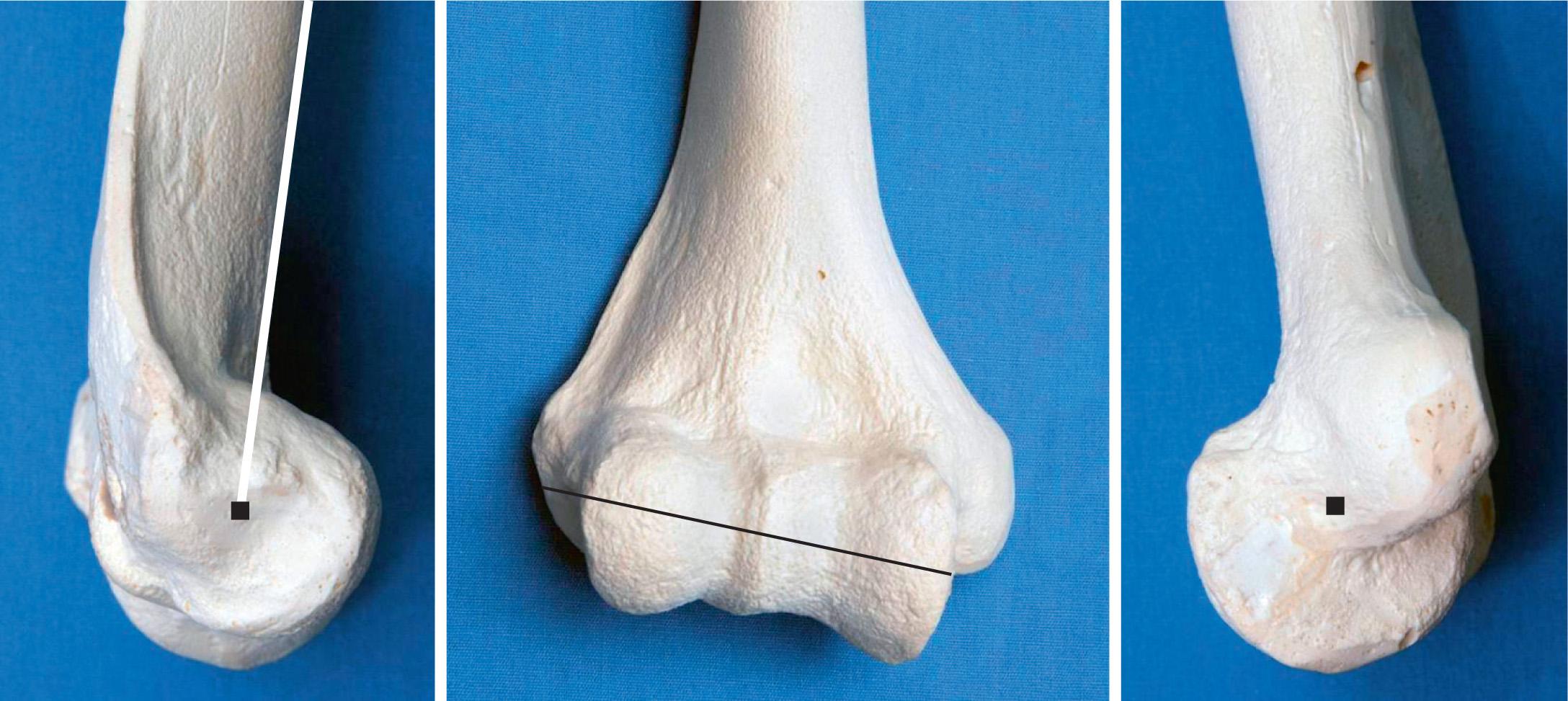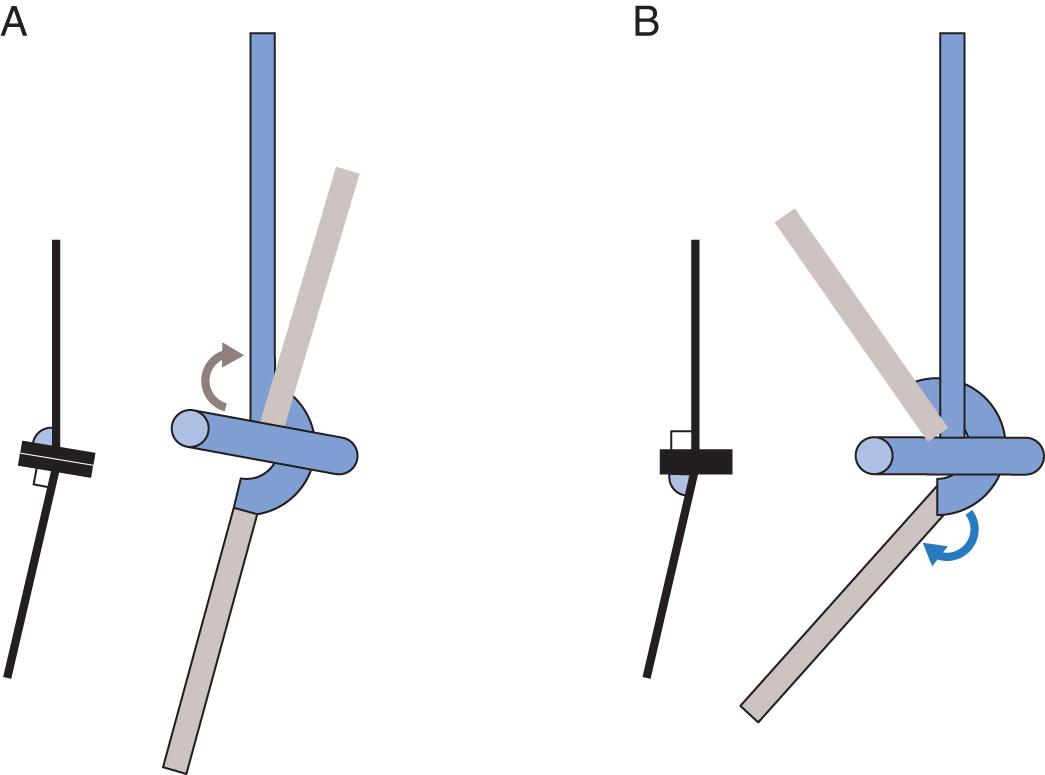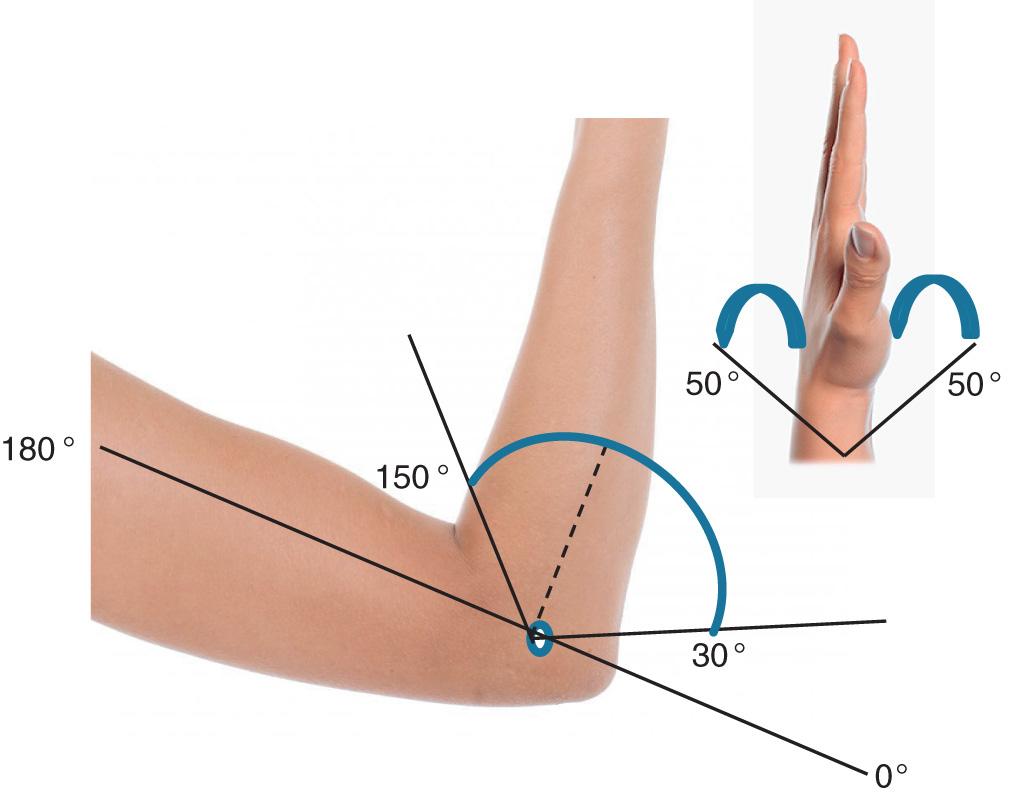Physical Address
304 North Cardinal St.
Dorchester Center, MA 02124
While we have discussed the biomechanics of the elbow in general terms earlier in this book, we now focus on concepts relevant to joint reconstruction, especially prosthetic replacement. As in Chapter 3 , the discussion is arbitrarily divided into the main joint functions: motion (kinematics), stability (constraints), and strength (forces).
The elbow is classified as a trochleoginglymoid joint; that is, it has two degrees of freedom: flexion–extension and axial rotation. Technically, this motion is considered both rolling and spinning.
The axis of rotation of flexion–extension has been defined as occurring about a tight locus of points measuring only 2 to 3 mm in the broadest dimension ( Fig. 86.1 ). This locus is positioned at the center of the projected center of the trochlea and at the center of the capitellum. On the lateral projection it is colinear with the anterior cortex of the distal humerus. This is one of the most important features of the biomechanics of this joint, because replication of this axis is essential for the proper balancing of soft tissue, particularly necessary in unlinked joint replacement, in distraction arthroplasty, in ligament reconstruction, and for optimum strength after replacement. The value of accurate replication of the axis is also recognized as a means of lessening bushing wear of linked devices.

The carrying angle is replicated by prosthetic implants at either the humerus or the ulna, or both ( Fig. 86.2 ). There may be theoretical implications regarding the line of action of the flexors and extensors during the flexion arc that can that influence ligament tension with unlinked implants. Either of these designs is considered biomechanically sound.

Although the elbow has a normal arc of flexion–extension of 0 to 150/160 degrees and pronation–supination of 75 to 85 degrees, most activities can be carried out with an arc of motion of 30 to 130 degrees of flexion–extension ( Fig. 86.3 ) and by 50 degrees of pronation and 50 degrees of supination.

Become a Clinical Tree membership for Full access and enjoy Unlimited articles
If you are a member. Log in here